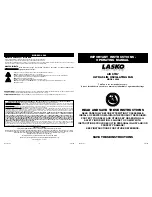
G3 FACSIMILE COMMUNICATIONS
5–30
Fig. 5-25 Images
The characteristics of Progressive Bi-level Image Compression are
explained below as a reference. First of all, after the original image has
been read in at high resolution, it is converted to low resolution, and this
low resolution image data proceeds to be encoded (compressed). On the
receiving end, the overall original image can be quickly recognized by the
steps in which this low resolution image compression data is received.
Next, to improve the quality of the low resolution image already sent, only
information needed to improve the resolution is forwarded. The previous
low resolution image is decoded on the receiving side with this informa-
tion, and following this, the high resolution image is displayed on top of
the previous low resolution image.
It is easy to quickly recognize the original image in the process of display-
ing the image from low resolution to high resolution in order by using this
scheme, with a CRT display for example. Also, according to the situation,
it is possible to interrupt the image transfer at the point where the original
image is recognized to some degree by the receiving side.
This scheme requires a page buffer memory for the low resolution image
because the low resolution images are used for the purpose of high resolu-
tion image encoding.
Progressive
Sequential
















































